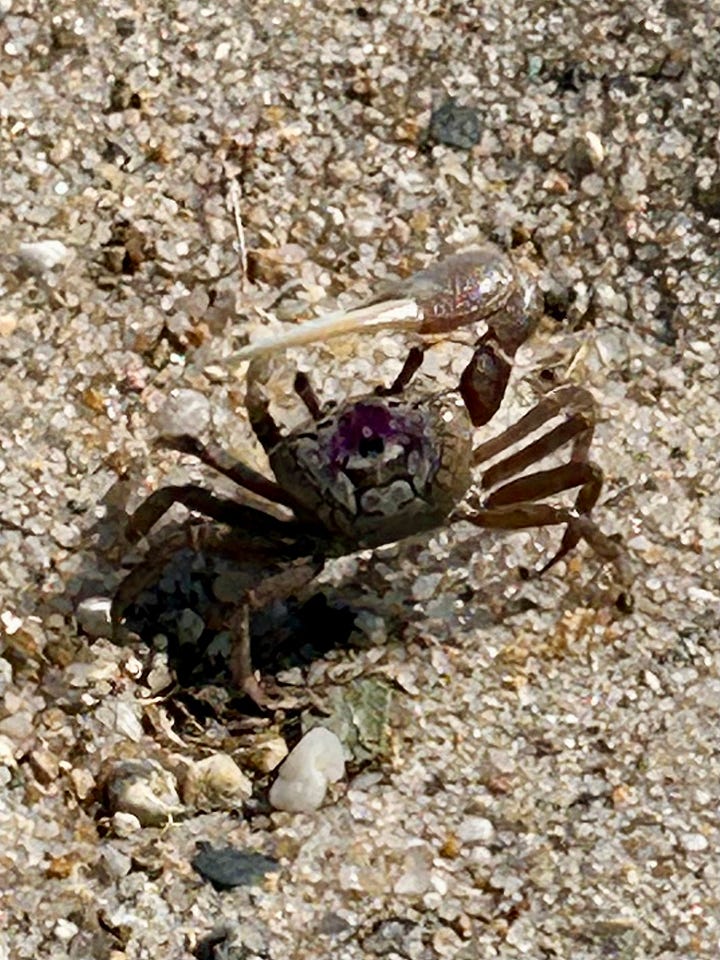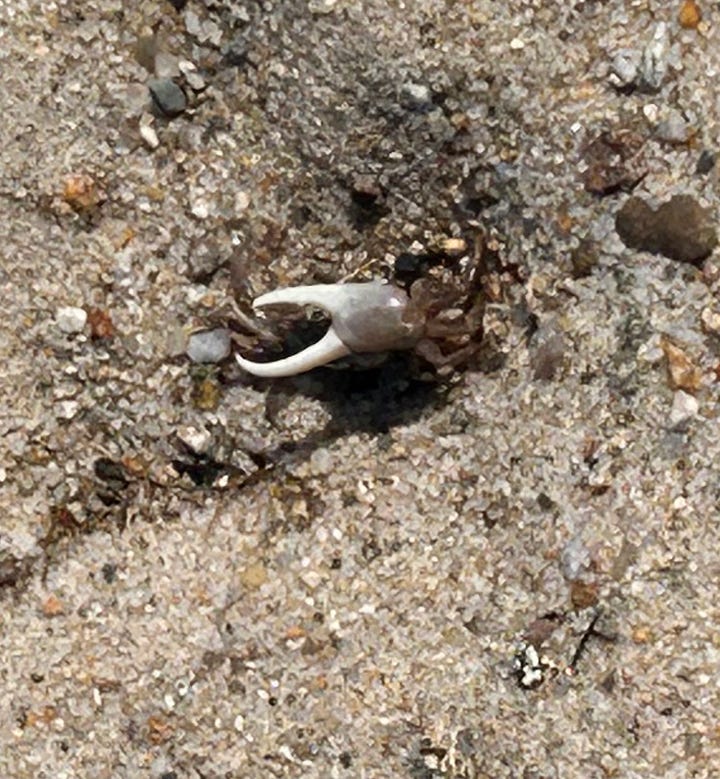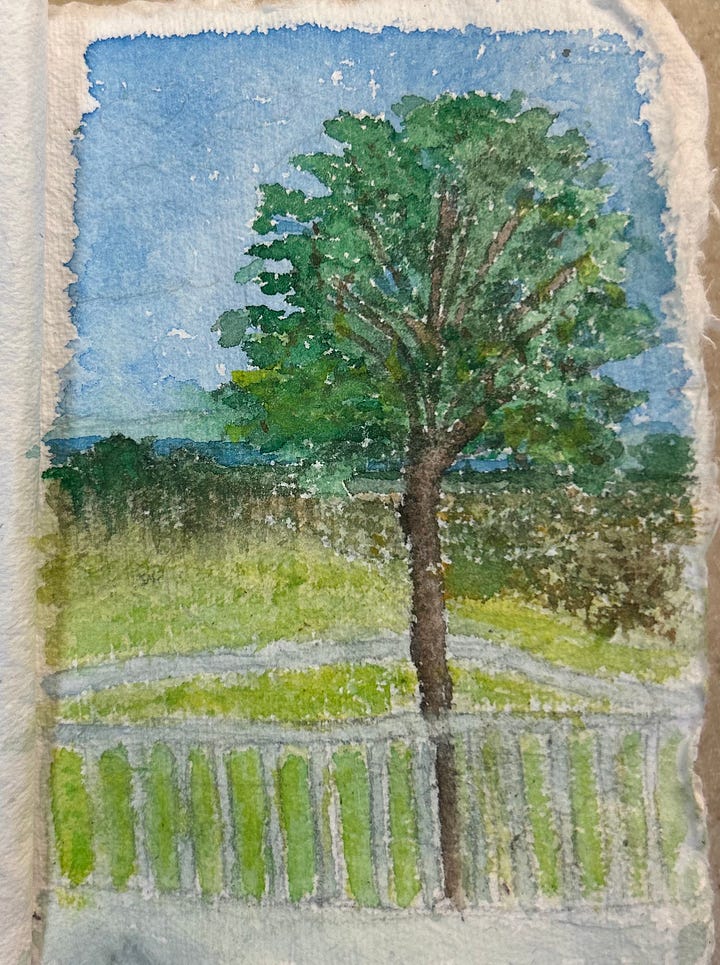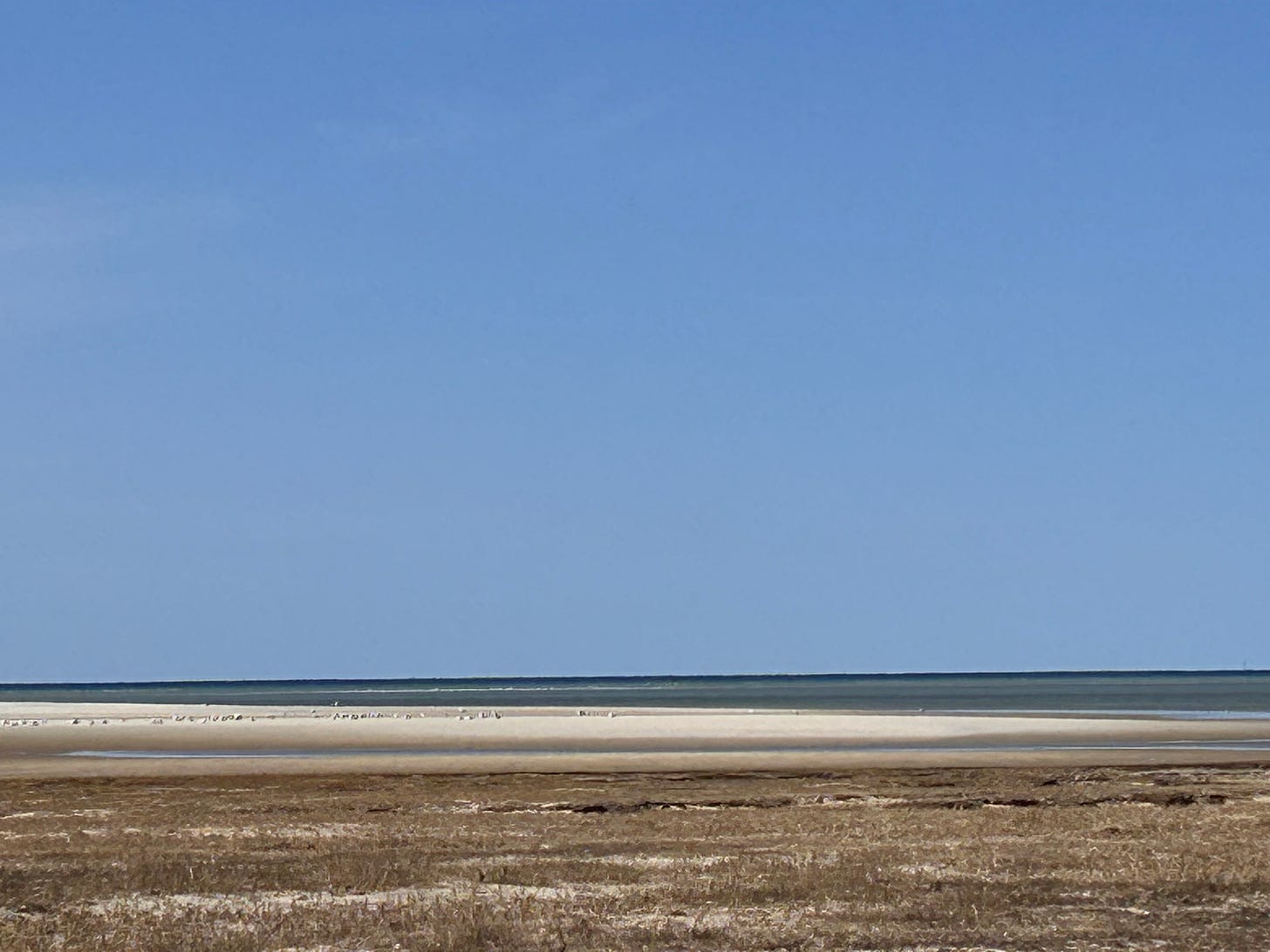What We Can Learn from Poets and Place
Plus some musings, a new Modern Love class, and a writing prompt
Hi,
Thanks for being here!
I’ve moved over to Substack, and this is my first post, so please forgive any hiccups or ineptitude. I don’t know what I’m doing yet. I’m basically the new girl at school roaming the halls in search of someone who will make eye contact, smile, and tell me math isn’t a required subject here.
I spent last week on Cape Cod, where I stayed with my very dear 92-year-old mother-in-law. We mostly played Scrabble and watched musicals, but I ventured out a few times, turning left or right from her housing complex onto Historic Route 6A, which Smithsonian once called the most appealing stretch of highway in America. Also known as Old King’s Highway, it winds for 62 miles past ice cream shops, churches, clam shacks, farm stands, antique stores, lighthouses, cranberry bogs, salt marsh, coastline — pretty much every iconic Cape Cod scene imaginable.
I love Route 6A, and for fifteen years I’ve driven up and down it on summer days when it’s bordered by endless well-coiffed pink and blue hydrangeas and on winter nights when the house windows glow with single white candles. But I’d never seen it in April, an in-between winter and spring month. It was lined with skeletal trees and spindly bushes, and among those were the most beautiful bright yellow pops of forsythia and daffodils, like cheerleaders drumming up enthusiasm for a new season.
I was born and raised in New Hampshire but spent most of my life thousands of miles from New England, and I never expected to live part of each year on Cape Cod. I’ll confess there’s a certain dissonance to it. Though the Cape has its share of poverty, of course (to quote
, poverty is universal), it’s nevertheless a pretty bougie-sounding place for someone whose childhood dinners regularly came from food stamps and sometimes from dumpsters, who attended college only thanks to Pell Grants and student loans, who forever juggled multiple jobs to make rent. I still feel the occasional twinge of discomfort when I mention spending time on the Cape, as if it somehow betrays my former poor, scrappy self.But the truth is I love beyond measure my husband who’s from Cape Cod and my in-laws who live there, and all those clam shacks and antique stores, salt marshes and beaches. And far outweighing any other emotion is gratitude for the chance to give my son a sense of my own New England childhood with its fireflies and sandcastles and snow. Plus, look at this lunch.
The Cape also has an illustrious literary history (our little cottage, for example, is across from the Edward Gorey House and ten minutes from where Kurt Vonnegut lived and wrote Cats Cradle and Slaughterhouse Five). And in terms of my own writing, I appreciate how easily my busy, city-girl mind turns there toward the natural world, its delights and lessons.
I’ve written before about keeping lists of micro-delights (some people call them glimmers). It’s one of a handful of daily practices I urge the members of my creative community, Studio Unfurl, to embrace because not only is it a great writing prompt, it’s a free anti-depressant, which might come in handy these days. (I invite you to embrace it, too!)
I started keeping another list a year ago after watching a TEDx talk by one of my favorite poets,
(who credits poet Wendy Videlock with the idea). The list is “teachers,” and the idea is simply to examine the physical world and ask how everything in it can be a teacher.Look for the Lessons
I’ve read a poem every day for the past eleven years (another daily practice I ask of my Unfurlers), but it wasn’t until I started keeping lists of teachers that I realized all my favorite poets write this way, as if they’re graduate students at Nature School, as if turtles, loons, and rain are their professors. Wendell Berry would have a PhD, his advisor the wood drake. David Whyte would be valedictorian. Mary Oliver graduated summa cum laude.
In Naomi Shihab Nye’s poem "Woven by Air, Texture of Air,” she offers the most beautiful lessons from birds.
Stay humble, blend, belong to all directions.
Fly low, love a shadow. And sing, sing freely,
never let anything get in the way of your singing,
not darkness, not winter,
not the cries of flashier birds […]
Nye’s whole perfect poem can be found in her book Voices in the Air, and she also reads it in this episode of On Being. The epigraph is another Stafford quote: “Your job is to find out what the world is trying to be.”
Thanks to the poets (especially Trommer and Videlock), I now ask students who travel with me to keep a list of teachers they encounter. (How porous that rock, how patient that cormorant, how trusting that dog, how tenacious that vine.) And I look for teachers wherever I go.
On the Cape last week, the first teacher appeared one afternoon when we stopped by our property. I was holding a buttercup under Ellis’s chin to see if he likes butter (he does) when I noticed a spot of yellow at the edge of the yard on a hillside, where we toss dead branches and weeds. I expected it to be a piece of trash, but no. There, in the center of a big tangled mess of sticks and yard waste, was a solitary, untroubled daffodil. What a guide for these times, I thought. What a lesson that it’s possible to bloom in a chaotic world.
My second teacher showed up at the beach, tiny and scuttling sideways across wet sand. Dan and Ellis had spotted a male fiddler crab in the tidal flats (males have one cartoonishly giant claw and one small claw, whereas females have two small claws). When I walked over to see it, Ellis said, “Look, Mommy, he’s waving at you!” The crab was the size of my thumb and indeed wielding his big claw in my direction, but as Dan explained to Ellis, he wasn’t saying hello; he was preparing to defend himself against the giant approaching threat. Message: It doesn’t matter how small we are or how big they are. We can still fight like hell.


I found my third and most fascinating teacher — or teachers, since there were thousands — at the Stony Brook Herring Run in Brewster. For anyone unfamiliar (as I was) with the incredible phenomenon of a herring run, I’ll explain: Herrings are born in freshwater and spend most of their lives in the ocean, but they return to their birthplace to spawn, after which they return to the ocean. And unlike salmon, they can spawn again, so they might repeat the journey multiple times. If any of this sounds simple, it’s just … not.
These herrings swim upstream (sometimes hundreds of miles) through rivers and streams, facing dams, waterfalls, and other barriers while threatened by all manner of predators. (I’ll spare you the video of seagulls eating them whole.) In Brewster, a “fish ladder” was built to help them reach a nearby pond, and some herrings sailed through the air to clear the next step.
There were obviously Olympians in the group, but most just pushed themselves forward, forward, forward. Occasionally they were tossed backward or flipped sideways, but I never saw one give up. At the end of this short video you can hear Ellis neatly summarizing the event.
I believe the teaching here is, to quote Glennon Doyle, We can do hard things. As in really hard. As in herring-level hard. And we can do them repeatedly, despite obstacles and predators.
Creativity is an antidote to hopelessness.
Speaking of effort and hard things, students have been telling me lately that it’s difficult to be creative when the world feels so heavy. In a coaching call last week one of my most talented and assiduous students said she’s been doing laundry at night when she’d typically be writing. I posited that it probably feels better to tidy and fold than create something new that will inevitably need cleaning up, like an essay draft. To me, this seems a natural response to all the chaos. When we’re overwhelmed by a torrent of bad news, there’s comfort in knowing we can at least organize our little corner. It’s a way of seizing some agency. I get it, I said, because I’ve been doing it, too.
And yet.
Since we’re living in a shitstorm, maybe we can use it as fertilizer. Maybe instead of being crushed by the hardship and horrors, we can try being the daffodil, the fiddler crab, the herring. Because even when life feels uncertain, one thing I’m certain of is that creativity has always been an antidote to hopelessness. Art is an age-old act of resistance. Expressive journaling is a scientifically proven bulwark against despair. Creating something new is a form of resilience. And believing in the value of generating beauty can save us.
And with that, here’s a writing prompt for you.
Examining nature helps us discover new ideas about how to live meaningfully, and with each lesson our world grows larger. With this in mind, identify something from the physical world that could be a teacher to you. Then set a timer for one minute, close your eyes, and ponder its lessons. When the timer goes off, set another timer and write for 3-5 minutes.
It’s a challenging creative time for me, too, but I’ve been journaling (I’d feel pretty weird if I weren’t, since this Substack is named after my guide to journaling), and I’ve managed to publish a few things this year. Here’s an essay that came out recently about solo travel and what I’ve learned from editing six editions of The Best Women’s Travel Writing. And this personal essay about spirituality, books, and birds is old news since it came out three months ago, but I’m sharing it again because I like it and because I love
and because it was my orientation into Substack School. I have a few more essays forthcoming (and one that will be used in a craft book, be still my heart), but my focus has been on teaching this spring. I’ve led two travel-writing classes through Studio Unfurl & Deep Travel and two Modern Love Essay classes through Off Assignment & 27 Powers, and I’m excited to be teaching another Modern Love class on May 10th for Sustenance, ’s community. (Joy is another brilliant poet! Have I mentioned how much I love poets?) Limited tickets are available to the public.I’ll share more news in future posts, along with musings, craft tips, journaling prompts, book recommendations, etc. And I’d be thrilled if you’d share, too. I’d especially love to read comments about your micro-delights and teachers!
Finally, you’ll be happy to hear that my student turned a corner and has been writing every day. Yesterday, instead of folding laundry, she wrote about it. Sometimes nature is our teacher, and sometimes a student is. The lesson: We can’t let the cruelty of the outer world steal our inner magic. It’s important to rest (even daffodils, fiddler crabs, and herrings do). But between resting, I hope you’ll keep blooming, keep fighting the giants, keep swimming upstream, and keep writing away.
xo, Lavinia
ps. Keep making art, too! I’ve been taking painting lessons from my beloved friend and creative co-conspirator
, and (don’t laugh, I’m such a newbie) I tried painting that lone daffodil and the view from my mother-in-law’s house. I’m sharing the paintings because I want to be braver, like daffodils, crabs, and herrings.









Thank you for all the prompts! You always inspire me to be creative and I learn from your adventures.
Such a eye opener for me to slow down and notice the little things all around me daily.
My teacher today was a big ole bumble bee circling my head to get to a lilac bush I was standing next to!